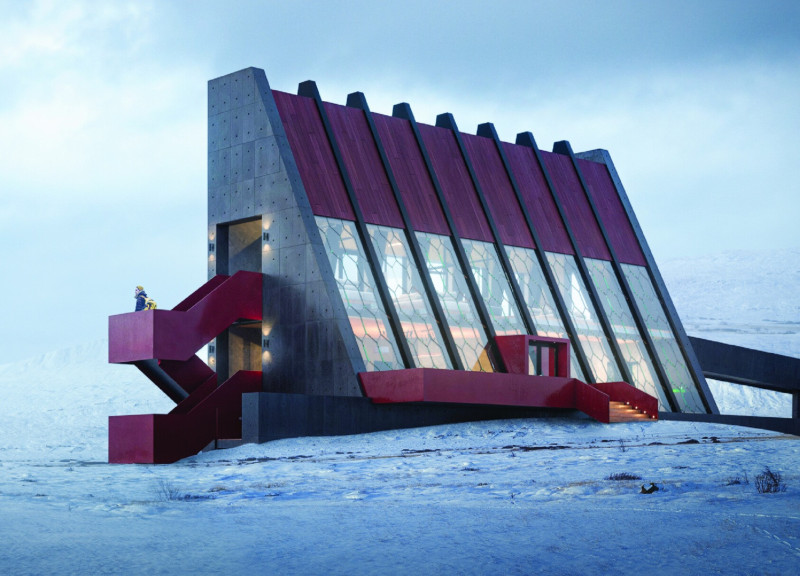5 key facts about this project
The structure features a prominent A-frame form, characterized by a steep 65-degree pitch that not only serves an aesthetic purpose but also facilitates efficient snow shedding. The exterior is clad in locally sourced red-stained wood, which provides a stark contrast to the surrounding snow and landscape. The use of large glazed panels enhances the building's connection to the environment, allowing natural light to penetrate the interior and offering expansive views of the nearby mountains and ski slopes.
An important aspect of The Red Beacon is its multifunctional layout. The ground floor houses a reception area, equipment storage, and social spaces to accommodate visitors. Locker rooms and restrooms are conveniently located for immediate accessibility after outdoor activities. The first floor offers a relaxation area and an observation deck, promoting interaction among visitors and creating a welcoming atmosphere. An underground level is planned for operational uses, including maintenance facilities for winter sports equipment.
What sets The Red Beacon apart from similar architectural projects is its commitment to sustainability and community integration. The building utilizes geothermal energy sourced from the nearby Krafla power plant for heating, which is an innovative approach that underscores the project’s environmental considerations. Additionally, the design promotes local culture by acting as a community hub where visitors can engage in winter sports activities while enjoying the natural beauty of their surroundings.
The architectural details include a robust structural framework built from volcanic ash concrete, selected for its thermal properties and resistance to harsh weather conditions typical in Iceland. By embracing local materials and techniques, The Red Beacon fosters a sense of place that resonates with its environment. The combination of these elements leads to a cohesive design that prioritizes both functionality and aesthetics.
To gain a comprehensive understanding of The Red Beacon, readers are encouraged to explore the architectural plans and sections, which offer further insights into the project's innovative approach and design strategies. Reviewing the architectural designs will provide a deeper appreciation of how this facility meets the needs of winter sports enthusiasts while maintaining a respectful relationship with the landscape.


 Bogdan-petru Pană,
Bogdan-petru Pană, 























